This is part 2 of 2 part series on the magical origins of the kaleidoscope by Tony Gilbert. Read part 1 here!
The Kaleidoscope’s Renaissance Inspiration
In A Treatise on the Kaleidoscope, Brewster credits a Neapolitan “Renaissance Man,” Giambattista della Porta, for inspiring the kaleidoscope. Porta, it seems, came up with an earlier, proto-version of the invention more than 250 years prior to Brewster’s patent. Brewster cites Porta’s most famous work Magia Naturalis, or Natural Magick, published in 1558, which includes detailed passages about experimental optics, lenses, visual devices, camera obscuras, and what Porta called, “Strange Glasses.”
Page through Porta’s Natural Magick, and one will find descriptions of devices and optic experiments which certainly seem to describe a kaleidoscope. In Porta’s Seventeenth Book of Natural Magick, the short chapters include titles such as “Merry Sports with Plain Looking-glasses,” “A Looking-glass Called a Theatrical Glass,” “Diverse Operations of Concave-glasses,” and “How Spectacles are Made.” Porta describes how a reader can make a certain type of theatrical looking-glass, “wherein more pictures will be represented of the same thing,” adding that, “I will show you one that is far more pleasant, and wonderful. For in the former, the images were seen no more then the glasses were in number. But in our glass, by the manifold and reciprocal dartings of the object and the glass, you may see far more, and almost infinite images.”
That multiplication of an object into “infinite images” is exactly the aim and purpose of a kaleidoscope. Similarly, Porta describes one experiment, in which: “If you set a candle in the middle, it will seem so to multiply by the images rebounding, that you shall not see so many stars in the sky, that you can never wonder enough at the order, symmetry, and prospect.”
The Stanford Encyclopedia of Philosophy describes Porta’s kaleidoscope-like devices as, “generators of marvels, with the objective of stirring spectators’ imaginations,” and, “The resulting images take on a form of existence that, like a phantasm, is halfway between ‘real’ and ‘imaginary.'”
What splendors and wonders would have been seen inside Porta’s workshop? Imagine, a fanciful Renaissance laboratory, chock-full of visual curiosities. The hermit in his lair, pondering the possibilities of the Philosopher’s Stone.

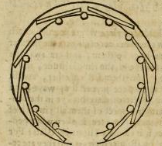
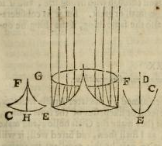

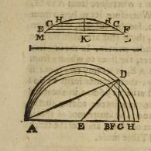
When the Muse Speaks but No One Listens
Porta’s Natural Magick described what many would call a kaleidoscope in 1558, more than 250 years before Brewster’s invention in 1816. One might ask, then, what took so long? Why weren’t Porta’s ideas developed earlier?
Maybe it’s revealing that Porta described his own hypothetical device as “childish,” seemingly disparaging what would have been the proto-kaleidoscope. Perhaps Porta’s idea never left the page because he did not see much use for something so “childish?” The use of that adjective, childish, reminds one of how Brewster fretted to distinguish his kaleidoscope as more than a mere child’s toy, taking pains in his treatise to explain the adult uses of this “philosophic tool.”
Or, perhaps we should also consider that Porta was, for a time, persecuted by the Catholic Inquisition. Natural Magick was banned, censored, and would have been considered esoteric or occult. For a time, Porta was as infamous as the likes of Bruno, Copernicus, and Galileo. But Porta escaped the Inquisition unscathed. Perhaps it was fear of the Inquisition that muzzled Porta, preventing a proto-kaleidoscope from being invented much earlier.
There are numerous examples from history of inventions that almost happened, or ideas which remained only rough sketches, scribbled notes, or the doodles of a dilettante, locked away for years until they were realized much later. Think of da Vinci’s draft concepts that resemble a modern helicopter or tank, or the Antikythera mechanism, a so-called ancient computer. Porta might have given the world a kaleidoscope two centuries earlier, but it wasn’t until Brewster read Porta’s book of magic, that the idea manifested into physical form.
The Embarrassing Member of the Family We Don’t Talk About
Like the title Natural Magick implies, Porta’s book was much more than a work about optics, toys, or visual tricks. While some might prefer to portray Porta as an early scientist, there is no mistaking that Porta was also a magician. Porta’s book features chapters on astrology, alchemy, occult philosophy, herbal poisons, sympathetic magic, and even a method proposing how one can “produce monsters.” Giambattista della Porta’s life and works certainly seem to illustrate a person who believed that his words and actions had a supernatural effect on the natural world around him. This is the sort of worldview that Crowley would later encapsulate when he defined magic as “the science and art of causing change to occur in conformity with the will.”
So then, why would David Brewster, who was an esteemed and respectable man of science and a model of the “modern man” of the Enlightenment, cite a Renaissance magician’s spellbook six times in a treatise about the kaleidoscope?
Modern science has distanced itself from its less empirical past. It has shunned relations between alchemy-chemistry, astrology-astronomy; pushed away distant cousins; and marked a clear boundary between science and pseudo-science. But in Porta’s time, that boundary was less clear; Hermetic philosophers and proto-scientists would often hop back and forth between science and magic. Porta was, in this sense, cut from the same cloth as the likes of Heinrich Cornelius Agrippa, Giordano Bruno, Marsilio Ficino, or Pico della Mirandola.
Even Isaac Newton, a champion for science credited with advancing our understanding of calculus and gravity, cultivated a secretive interest in alchemy and occult studies. In fact, a key biography about Newton, based on access to Newton’s personal letters and manuscripts, was authored by none other than David Brewster! Brewster had unique and privileged access to Newton’s nachlass, and he was well aware of Newton’s panache for the occult and alchemy, long before this was well-known among the public.
Brewster may have felt embarrassed for his hero, Newton, unable to reconcile the image of Newton the scientist, a man of reason, with an image of Newton the superstitious occultist or magician. Brewster lamented how “a mind of such power, and so nobly occupied with the abstractions of geometry” could also concern itself with the alchemical charlatanry “of a fool and a knave.”
It was many years before Newton’s occult studies came to public light. John Maynard Keynes, the economist who purchased Newton’s nachlass in the mid-20th century, became especially familiar with Newton’s private writings, prompting him to conclude that, “Newton was not the first of the age of reason, he was the last of the magicians.”
Secret Societies of Scholars
Why would the likes of Isaac Newton feel any need for secrecy, to hide his affinity for alchemy? Why should an intellectual like Porta be categorized as an occultist, inferring something hidden or secret? Besides fear of ridicule, a plain answer would be actual retribution. Survival, then, was a simple reason why some scholars and intellectuals were driven underground, their books passed around in secret. Accusations of witchcraft or sorcery could be met with severe penalties, including capital punishment, even through the 18th century.
Secret societies of scholars were not uncommon among some renaissance and early modern thinkers. Giambattista della Porta even founded one such group in Naples, Academia Secretorum Naturae, or the Academy of the Mysteries of Nature. The painter Hieronymus Bosch was a member of the Brotherhood of the Swan, which still exists today in the Netherlands. And in fact, the Royal Society, the preeminent science academy in the United Kingdom, has its origins in the Invisible College, a Rosicrusian order.
The Royal Society’s origin story is especially telling about the departure point between natural magic or proto-science on one hand, to modern science on the other. The Royal Society’s members have included Isaac Newton, and its contributions to science are illustrious. When the Royal Society officially formed in 1660, this was a time when modern science was still emerging from its proto-science past. It did not seem so strange that an organization for science should emerge from Rosicrucianism, a secretive movement known for studies in spirituality, mysticism, alchemy, and occult knowledge.
David Brewster was familiar with other secretive orders, too, as he was commissioned by the Grand Lodge of Scotland in 1804 to write The History of Freemasonry. Brewster would have been well-acquainted with Masonry’s mythos and narrative: The value placed on the classical Seven Liberal Arts, the Trivium and Quadrivium; its veins of Pythagoreanism and Neoplatonism; and the origin story about the transition from operative to speculative Masonry, when stonemason guilds transitioned to welcoming aristocrats and men of letters. Masonry had its own critics over the years, and like Porta or other hermetics, the fraternity used secrecy as a shield against critics, “cowans and eavesdroppers.”
Detour through Harvard
The Collection of Historical Scientific Instruments at the Harvard Science Center exhibits a few curious pieces which highlight the fact that spirituality and science were once not such polar opposites. These antiques from the history of science include models of the solar system, survey instruments, precise timepieces, and aids to navigation, like sextants and sundials. One might not expect tools of science to be adorned with symbols of spirituality, alchemy, astrology, and religion. Yet sure enough, here they are for history to see, a time when magical belief was not opposed to scientific exploration. See here, instruments adorned with astrological and zodiac symbols, Christian crosses, memento mori, and the Tetragrammaton.
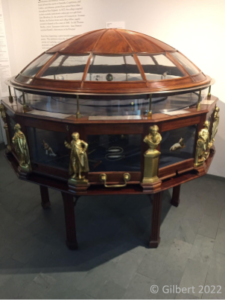
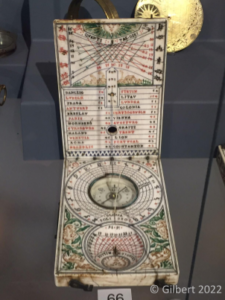




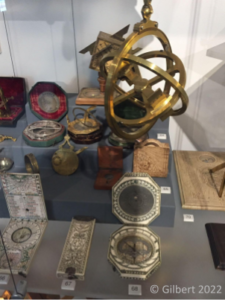

Let There Be Light
Only recently, it seems, have esoteric or occult studies become more open or socially acceptable. People like Justin Sledge on the Esoterica YouTube channel have gone a long way in shedding light on areas of academia that were once considered to be less respectable. The Embassy of the Free Mind in Amsterdam preserves Hermetic texts in a modern version of the Library of Alexandria. And thousands of formerly occult texts are now found easily free online, on sites like The Internet Sacred Texts Archive. Is word “occult” still appropriate to describe areas of formerly secret knowledge that are now widely available, that have come out of the shadows and fully into the light?
Magic and science have danced together much closer in the past. Perhaps it is we who are naive to believe that our science is not magic. As Arthur C. Clarke put it, “Any sufficiently advanced technology is indistinguishable from magic.”
The Finite Perceives the Infinite
One wonders what Brewster and Porta saw with their own eyes, when they looked through their own looking-glass, to see wonders of shape and light. Although they would not have known the word fractal, fractal art is nonetheless what we see when we peer through a kaleidoscope today. Coined by the mathematician Benoit Mandelbrot in 1975, the word fractal is derived from the origin words for shattered or fractured, and this is exactly the effect of a kaleidoscope, when multiple lenses produce the visual effects of shattered glass or a fractured mirror. Fractals are analogized with infinity, forever changing and expanding. Likewise, in their own way, Brewster and Porta would also have been staring into the infinite future when they peered through the looking-glass; unaware, perhaps, that their tinkering and thinking would prognosticate concepts—fractals—that underlie math, technology, and our modern world.
True to the purpose of Brewster’s intentions, even today, the kaleidoscope beautifies and adorns the world in its own small, magical way. To Brewster, even this little toy was one of the “many works of the Divine artist” to whom “nothing is made in vain.”
How fascinating is it that something so small and finite as the eye perceives the infinite? Whether looking through a telescope, stargazers looking aloft toward the Heavens, or back here on Earth looking through a kaleidoscope at everyday items that are multiplied exponentially, mundane scenery at once appears fascinating and alive. Each turn of a kaleidoscope shows objects “reflected in an endless variety of patterns.”
References
- More Worlds than One, David Brewster: https://archive.org/details/moreworldsthano02brewgoog
- A Treatise on the Kaleidoscope, David Brewster: https://archive.org/details/b29295440/page/n13/mode/2up
- Natural Magick, Giambattista della Porta: https://archive.org/details/naturalmagickbyj00port/page/n5/mode/2up
- Stanford Encyclopedia of Philosophy, Porta: https://plato.stanford.edu/entries/della-porta/#WorkMagi
Websites
- https://youtu.be/uxdGpXSTc0Q
- https://youtu.be/5qnYS8vN7Gk
- https://science.howstuffworks.com/kaleidoscope.htm
- https://capekaleidoscopes.com/
- https://www.jstor.org/stable/26559824
- https://www.nature.com/articles/509030a
- https://www.cambridge.org/core/books/abs/cambridge-companion-to-newton/preliminary-reassessment-of-newtons-alchemy/4A043063FF0DEA1073FD4D8B53944C02
- https://www.online-literature.com/victor_hugo/les_miserables/93/
Featured image by Dmitri Posudin from Pixabay


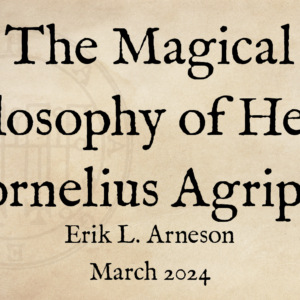
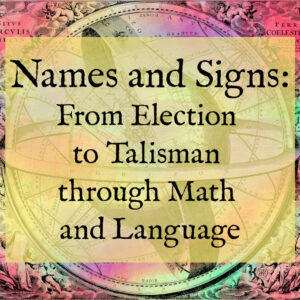
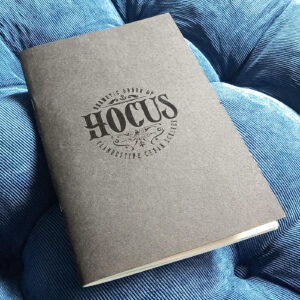
[…] This is part 1 of a 2 part series on the magical origins of the kaleidoscope by Tony Gilbert. Click here to read part 2! […]